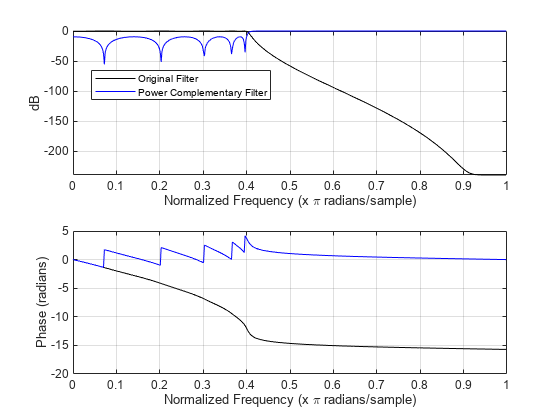cl2tf
Convert coupled allpass lattice to transfer function form
Syntax
Description
[returns vectors of coefficientsb,a] = cl2tf(k1,k2)bandawhenk1andk2are real vectors.b是向量的系数corresponding to the numerator of the transfer function H(z).a是向量的系数corresponding to the denominator of the transfer function H(z).k1andk2are real vectors corresponding to denominators of the allpass filtersH1(z)andH2(z). This is provided in the transfer function:
Examples
Input Arguments
Output Arguments
References
[1] Mitra, Sanjit Kumar, and James F. Kaiser, eds.Handbook for Digital Signal Processing. New York: Wiley, 1993.
[2] Vaidyanathan, P. P. Multirate Systems and Filter Banks . Prentice-Hall Signal Processing Series. Englewood Cliffs, N.J: Prentice Hall, 1993. CloseDeleteEdit
Extended Capabilities
Version History
Introduced in R2011a

